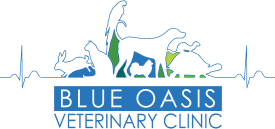Veterinary x-rays have been in use throughout the medical community for many decades. X-rays are by far the most regularly used form of diagnostic imaging in the veterinary industry because they are cost effective (comparatively speaking), and they can accurately diagnose the state of skeletal structure and composition, large body cavities, and the presence of many foreign objects.
Dog x-rays are totally painless, but some dogs/cats can benefit from sedation to reduce anxiety and stress.
Veterinary x-rays usually proceed as follows:
The dog is placed on the x-ray table. A technician positions the x-ray machine so that the x-ray beam targets only the area of interest.
Modern x-ray equipment allow for low levels of radiation and when used only occasionally are perfectly safe for your dog.
Because dog x-rays are static images, the procedure usually requires less time than a procedure like an MRI.
Dog x-rays have traditionally been captured on actual film, and still can be when necessary. However, our x-ray images are now digital which allows us to capture the images on a secure server that our veterinarians can access at any time, and can also share with specialists, if necessary.
FAQ’s
Frequently Asked Questions
Because of radiation safety regulations, owners cannot be present in protected areas during the study.
Generally it’s best if you do not feed your pet the morning of the examination. Check with your veterinarian to make sure that this does not interfere with any of your pet’s medical conditions.
Many x-ray examinations can be done with gentle manual restraint. However, sedation or anesthesia is used for pets that are excitable, or for imaging studies that have to be very carefully positioned. Often the stress of an exam without sedation is more detrimental to the patient that the effects of sedation itself.
The dose of radiation used to take x-rays is very low, and will not cause harm to your pet.



